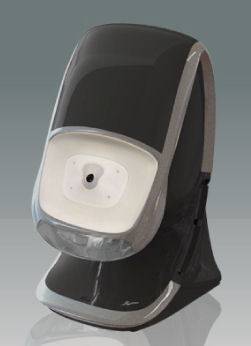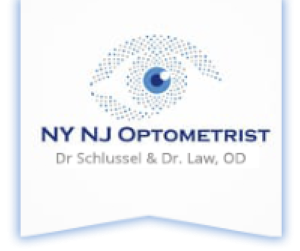 We asked Optometrist in NYC Dr. Alan Schlussel a few questions about the new OPTOS optomap® and here’s what he said:
We asked Optometrist in NYC Dr. Alan Schlussel a few questions about the new OPTOS optomap® and here’s what he said:
1) What is the optomap® used for and how does it work?
The optomap® provides a panoramic view of your retina, allowing us to pick up signs of eye diseases even before they progress to advanced stages causing vision loss.
An optomap® retinal exam in Manhattan is fast and completely painless. Nothing touches your eye at any time. It is suitable for the whole family. During the retinal eye exam you simply look into the device with one eye at a time (like looking through a keyhole) and you will see a comfortable flash of light to let you know the image of your retina has been taken.
Under normal circumstances, dilation drops might not be necessary, but as your NYC eye doctor I will decide if your pupils need to be dilated depending on your conditions. The capture takes less than a second. The 3D images of your retina are available immediately. So we can look at your retina together.
2) What anatomical structures do you see when you look at the optomap® results?
The optomap® captures digital images of the total retina, which includes the optic nerve, macula and blood vasculature. It provides a view 10x better than traditional ophthalmoscopic eye exam. The optomap® ultra-wide-field retinal image is a unique technology that captures more than 80% of your retina in one panoramic image while traditional imaging methods typically only show 15% of your retina at one time.
3) What types of eye diseases and disorders can be discovered?
Many eye diseases develop without symptoms: They are often first discovered during a comprehensive eye examination.
If detected early, and with appropriate treatment these and other conditions may be corrected or minimized, and the severity of potential vision loss can be reduced. Here are some of the eye diseases we can diagnose with the help of an optomap eye exam: Macular Degeneration, Diabetic Retinopathy, Glaucoma, Detached Retina, Melanoma, Hypertension
Age Related Macular Degeneration (AMD) |
Diabetic Retinopathy |
Glaucoma |
| AMD is a leading cause of blindness in older people is a condition called age-related macular degeneration. Aging can cause the macula to slowly degenerate and reduce central vision in people over 50 years of age. It is estimated that 8.5% of individuals between 43-54 years and 36.8% of those over 75 years have some degree of macular degeneration. | Diabetes affects 25.8 million people in the United States, yet 7 million people are not aware that they have the disease. Diabetes is the leading cause for new cases of blindness among adults in the United States. The major cause of blindness in people with diabetes is called diabetic retinopathy. | An estimated 1.6 million individuals over 40 years of age in the United States have glaucoma. Approximately half of these people don’t know they have the disease. Almost every case of glaucoma develops without symptoms. Early detection and treatment can reduce the severity of vision loss. |
Retinal Detachment |
Melanoma |
Hypertension |
| When the retina detaches, it is lifted or pulled from its normal position. If not promptly treated, a retinal detachment can cause permanent vision loss. Anyone can get a retinal detachment; however, they are far more common in nearsighted people, those over 50, those who have had significant eye injuries, and those with a family history of retinal detachments. | Melanoma is a cancer that usually occurs on the skin. It develops from the cells that produce the dark-colored pigment melanin, which is responsible for our skin’s coloring. These cells, called melanocytes, are also found in other places in our bodies, such as our hair, the lining of our internal organs, and our eyes. When melanoma does occur in the eye it is called ocular melanoma. | The term ocular hypertension usually refers to any situation in which the pressure inside the eye, called intraocular pressure, is higher than normal. Eye pressure is measured in millimeters of mercury (mm Hg). Normal eye pressure ranges from 10-21 mm Hg. Ocular hypertension is an eye pressure of greater than 21 mm Hg. |
4) What do you find most exciting as an NYC Optometrist and why did you invest in this technology for your Practice?
I love the optomap® for its ease of use and immediate results, which help save time during thorough eye exam. OPTOS is the only manufacturer of this type of panoramic retinal imaging. They have an excellent reputation in manufacturing innovative, unique imaging technology.
5) Do the patients that walk through your doors day in and day out, appreciate the upgrade in technology?
Absolutely – our patients are very impressed with the digital retina imaging technology!
6) How does this technology improve comprehensive eye exams compared to the days when we did not have optomap® Retinal Imaging?
Earlier diagnosis of potentially sight threatening conditions described above
7) To which patients do you recommend an optomap® eye exam?
We recommend an optomap® retina exam to all of our patients that return for annual eye exams. Maintaining a regular baseline of images is important in diagnosing subtle changes in ocular health.
8) Are there certain symptoms or vision issues that would point to the need for a retinal exam?
- Patients with a family history of eye diseases such as macular degeneration, or glaucoma
- Patients currently taking medications for diabetes need a diabetic retina exam to check for diabetic retinopathy
- Patients with hypertension or long term high dose medications for arthritis or other chronic rheumatologic conditions
- Patients that present with a sudden onset of floaters or change in vision
9) Do you have any optomap® success stories?
Using the optomap® an eye doctor may be able to detect and treat a disease that would have otherwise gone undetected.
We have seen a number of benign “freckles” in the middle layer of the retina that have the potential to become larger and potentially cancerous.
We have also diagnosed a few retinal detachments on patients that were asymptomatic. Early referral to retinal specialist saved them from partial or complete vision loss!
To book a retinal eye exam with optomap® at Alan B. Schlussel your NYC eye doctor call us at 212-683-2004 today.
